David Irwin and Tobias Koenning, Dilas
The optical technique enhances MRI technology for diagnosis and other applications.
In the past several decades, medical imaging has made huge strides. The field of MRI in particular has seen huge advancements in technical capability, as recognized by a 2003 Nobel Prize in physiology/medicine and matched by an explosion in clinical use. Researchers continue to bring MRI to bear on new medical problems, continually expanding the range of conditions with which the technology can assist in diagnosis. Importantly, MRI does not share with x-ray or coherence tomography the safety risks inherent with ionizing radiation.
One of the more exciting trends in MRI technology is the development of contrast-enhancement schemes that use spin-exchange optical pumping (SEOP) to produce hyperpolarized noble gas, which in turn enables entirely new applications, especially in the area of pulmonary imaging. One often-cited benefit of hyperpolarization-enhanced MRI is an enormous boost in signal, on the order of 100,000 times. However, as researchers Joseph Six and Theodore Hughes-Riley (and their co-authors) aptly put it: “The development of [hyperpolarized] pulmonary MRI is therefore not only a quest for higher signal intensity and better spatial resolution but also a pursuit for novel sources of contrast that probe different structural and functional aspects of lungs in health and disease.”1 Adding to the excitement is the realization that each noble gas species behaves differently in the body, greatly enlarging the scope of possible imaging applications.2 Different host alkali metals can be used in the production of the hyperpolarized gas, allowing for experimentation and eventual optimization of the gas-generation process.3
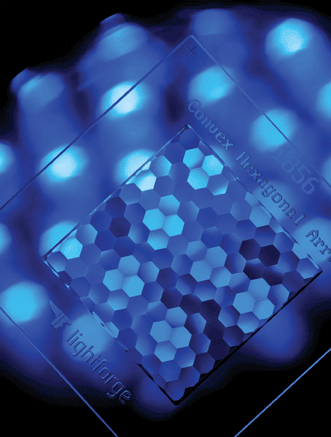
Figure 1. A representative hexagonal homogenizer. Courtesy of PowerPhotonic Ltd.
While the field of hyperpolarization-enhanced MRI shows great promise, several factors have presented barriers to wider adoption in the medical community. One contributing factor has been the availability of technically appropriate and affordable laser systems for the production of hyperpolarized gas. Although diode laser systems provide affordable laser power covering the absorption spectra of the alkali metals (with the exception of sodium), their wide linewidth, as compared with the absorption linewidth, has traditionally excluded them from the field. The recent development by Dilas of a high-performing, cost-effective diode laser module appropriate for hyperpolarization experiments will help to accelerate the coming revolution in hyperpolarization-enhanced MRI. Elsewhere in the research community, critical technologies in the area of atomic-spin gyroscopes are also likely to be advanced by the availability of this module. The critical customer requirements for the new hyper-polarization module are briefly summarized in Table 1.
![]()
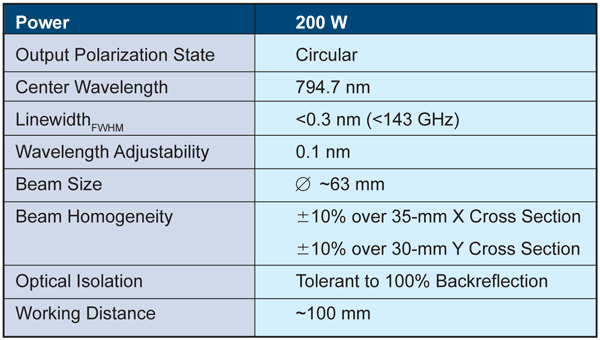 Table 1. Module specifications.
Table 1. Module specifications.
Power
In a hyperpolarized gas-generation system, the rate of gas production is proportional to the absorbed laser power. Since high gas-generation rates increase commercial viability, it is desirable to boost the output power of the diode pump module to about 200 W. Should the need arise, higher module powers are easily within reach.
Polarization
SEOP has long been understood as an excellent means to create a high level of polarization in the nuclei of a noble gas – most commonly with 3He or 129Xe, but also with 83Kr and 21Ne.4 The method relies on delivering a circularly polarized electromagnetic field to a mixture of an alkali-metal vapor and noble gas (a buffer gas is also included in the gas mixture for reasons beyond the scope of this discussion). Under the right conditions, photons absorbed by the alkali gas transfer a large portion of their angular momentum to the valence electrons of the alkali atoms, resulting in spin polarization or, equivalently, spin alignment of those electrons. Subsequent collisions between the alkali and noble gas atoms serve to transfer the spin polarization from the alkali electrons to noble gas nuclei. Over repeated collisions, the percentage of spin polarization of the noble gas nuclei increases, and polarization fractions as high as 80 percent have been reported.5
When compared with the degree of nuclear polarization achievable with standard MRI technology, this represents an enormous increase in polarization – a factor of over 100,000. It is this extremely high level of nuclear polarization, or hyperpolarization, that results in greatly increased signal levels during MRI.
To ensure a high degree of circular polarization in the output beam of the laser module, a zero-order quarter-wave plate was used in conjunction with a high-extinction linear polarizer. Although the diode lasers already exhibited a high degree of polarization purity (>95 percent), owing to control of internal stresses that can be generated in the diode manufacturing process, the addition of a linear polarizer ensures the highest possible polarization purity at the output.
Spectral content
Since only those photons that are absorbed by alkali atoms contribute to the hyperpolarization phenomenon, it is critical that the output of the laser system be matched to the absorption spectrum of the alkali vapor. While the exact absorption spectrum of the alkali depends on several factors – including the alkali species, operating temperature, pressure and gas mixture – all reasonable operating scenarios still result in a very narrow absorption spectrum, typically on the order of tens of picometers or, equivalently, tens of gigahertz. For diode lasers, which frequently exhibit a spectral width of several nanometers, achieving such a narrow spectral line presents a challenge. Fortunately, an existing technology dramatically reduces the linewidth of diode laser systems: the volume holographic grating (VHG).
The VHG uses a series of partially reflecting layers to create optical feedback of suitably narrow linewidth. When placed in the output path of a diode laser, this optical feedback seeds the diode laser cavity with narrow-band light that drives the stimulated emission process. Although VHGs with spectral selectivity of single-digit gigahertz have been demonstrated,6 other practical effects limit how narrow the final output spectrum can be made. Some of these effects will be discussed in the implementation section of this article.
While a narrow output spectrum is critical to achieving good absorption of input light, equally important is an alignment between the spectra of the laser output and the alkali species’ absorption peaks. With a spectrum only a fraction of a nanometer wide, even a small mismatch between the center line of the laser spectrum and the alkali species’ spectrum can drastically reduce light absorption. To maximize power transfer from the laser to the gas mixture, it is desirable to tune the center line of the laser over a small range to match the output spectra to the particular gas cell.
The new module uses a VHG for each diode. In addition, each VHG is connected to a cooling element that allows individual VHG temperatures to be precisely adjusted. Through control of the VHG temperature, the resonant frequency of the VHG can be shifted over a range of ±0.125 nm. This architecture allows the center wavelength of the diode laser module to be accurately tuned to the gas resonance, also opening the door to the generation of many interesting spectral profiles not possible with tandem tuning of all diode sources simultaneously.
Spatial profile
Another factor to be considered in the design of a pump system for SEOP is the illumination profile of the laser output. Since it is desirable to have a consistently high level of nuclear polarization over the entire volume of the gas cell, and the rate of polarization production is dependent on input intensity, it is important to illuminate the gas mixture with a homogenous intensity profile. As is often the case, the gas cell is a cylindrical tube, making a near-circular beam profile the most desirable shape. Another factor to be considered is the beam delivery to the gas cell. While fiber-coupled modules provide a convenient way of transporting energy, fiber delivery schemes usually require some additional beam shaping elements7 and suffer unwanted side effects. First, fiber transport decreases the polarization purity of the output beam, resulting in reduced gas polarization. Second, losses inherent to fiber coupling again result in lost power and reduced system efficiency. By delivering a free-space beam of the desired profile to the gas cell, these complications are avoided.
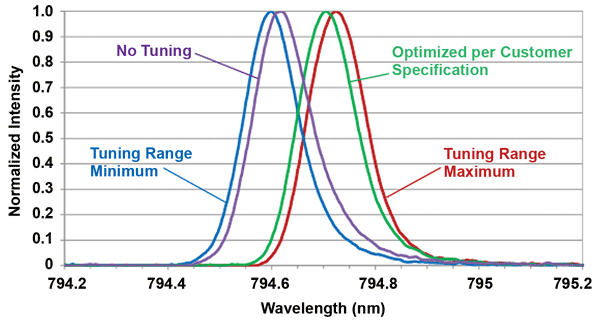 Figure 2. A demonstration of the laser’s spectral tunability: Each curve represents the laser output spectrum when tuned to a different target wavelength. Note that the spectral linewidth remains consistent over the tuning range. Courtesy of Dilas.
Figure 2. A demonstration of the laser’s spectral tunability: Each curve represents the laser output spectrum when tuned to a different target wavelength. Note that the spectral linewidth remains consistent over the tuning range. Courtesy of Dilas.
The new module uses a homogenizer (Figure 1) and field lens to provide an even spatial profile over the majority of the output beam. Such a homogenizing system uses small lenslets to divide the input beam into many small subregions, which are then overlapped in the work plane to create a smooth profile of the same shape as a single lenslet. As it happens, the use of circular lenslets in the homogenizer produces a high degree of lost energy, because any arrangement necessarily leaves gaps between circles.
In a homogenizing array, light passing through these areas between lens elements does not benefit from the homogenization effect and becomes uncontrolled or unusable. To reduce the amount of waste light while still maintaining good illumination of the circular cross section of the gas cell, the new module makes use of a custom hexagonal array. This honeycomb pattern yields a beam that still covers over 82 percent of a circular cross section and has effectively no lost light between homogenizer lenslets.
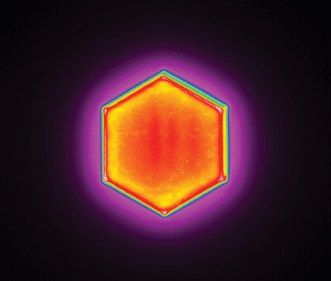
Figure 3. Illumination profile of the output beam. Courtesy of Dilas.
Optical isolation, back-reflection tolerance
The pump laser described here is being used in a double-pass configuration that uses a mirror at the output of the laser cell to retroreflect the beam back through the cell. While this double-pass arrangement increases the opportunity for alkali atoms to absorb laser photons, it also subjects the laser to potentially high levels of return power. If left uncontrolled, this level of return energy can destabilize the operation of the diode lasers or, even worse, threaten their reliability. Additional optical isolation hardens the module against back-reflected light and shows that the unit can be operated in this condition with no penalty.
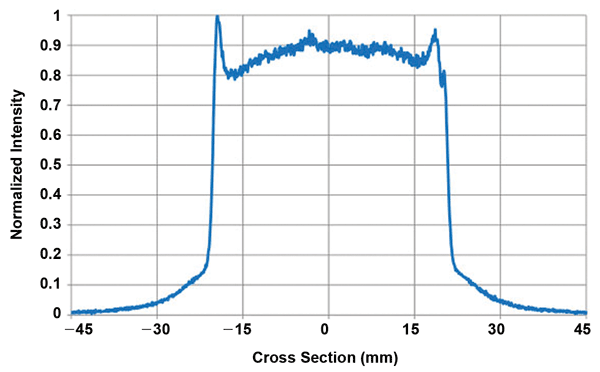
Figure 4. The lineout along the horizontal cross section. Courtesy of Dilas.
Results
The spectral performance of the laser module (Figure 2) far exceeded the minimum specification needed to achieve a hyperpolarized gas. A center wavelength within 0.01 nm of the specification was achieved while also demonstrating a linewidth of almost an order of magnitude better than required, with a tuning range twice that required. Recall that with intentional detuning of individual diodes, the overall output spectrum can be artificially broadened, if needed. These results do not indicate fundamental limits on performance and, if required, still narrower linewidths and/or a larger tuning range can be produced.8
Figures 3 and 4 show that the beam shape very closely matches the expected size and hexagonal form. Note that the fine striations seen in the image are an artifact of the screen onto which the laser beam was projected, rather than a property of the beam itself. Over the majority of the profile, the illumination shows very good homogeneity, but uniformity does suffer slightly at the edges. This is caused by diffraction effects at the edges of the homogenizer lenslets and is frequently present in homogenized laser beams as “ears” at the edge of the profile. While the achieved profile was appropriate for this particular application, future designs can explore trade-offs that minimize intensity peaks at the profile edge.
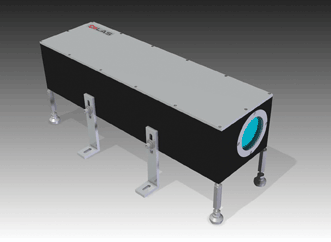
Figure 5. CAD rendering of complete 200-W diode laser module. Courtesy of Dilas.
The successful delivery of a 200-W diode laser module (Figure 5) appropriate for production of hyperpolarized gas represents an important milestone in the commercialization of contrast-enhanced MRI technology. With a flexible spectral control system to facilitate ongoing research and development, as well as a rugged design appropriate for field deployment, this product will serve as a valuable tool in the drive toward ever more capable MRI.
Meet the authors
David Irwin is an optical engineer at Dilas in Tucson, Ariz.; email: [email protected]. Tobias Koenning is manager of engineering at Dilas; email: [email protected].
References
1. J.S. Six et al (January 2014). Pulmonary MRI contrast using Surface Quadrupolar Relaxation (SQUARE) of hyperpolarized 83Kr. Magn Reson Imaging, Vol. 32, pp. 48-53 (doi: 10.1016/j.mri.2013.08.007).
2. G.E. Pavlovskaya et al (2005). Hyperpolarized krypton-83 as a contrast agent for magnetic resonance imaging. P Natl Acad Sci USA, Vol. 102 (doi:10.1073/pnas.0509419102).
3. T.G. Walker (2011). Fundamentals of spin-exchange optical pumping. J Phys Conf Ser, Vol. 294, 012001 (doi:10.1088/1742-6596/294/1/012001).
4. T.G. Walker et al (1997). Spin-exchange optical pumping of noble-gas nuclei. Rev Mod Phys, Vol. 69, p. 629 (doi: 10.1103/RevModPhys.69.629).
5. W.C. Chen et al (2014). On the limits of spin-exchange optical pumping of 3He. J Appl Phys, Vol. 116, 014903 (doi: 10.1063/1.4886583).
6. J.F. Sell et al (2009). Frequency narrowing of a 25 W broad area diode laser. Appl Phys Lett, Vol. 94, 051115 (doi: 10.1063/1.3079418).
7. F.W. Hersman et al (June 2008). Large production system for hyperpolarized 129Xe for human lung imaging studies. Acad Radiol, Vol. 15, pp. 683-692 (doi: 10.1016/j.acra.2007.09.020).
8. T. Koenning et al (Feb. 25, 2014). Narrow line diode laser stacks for DPAL pumping. Proc SPIE, Vol. 8962, High Energy/Average Power Lasers and Intense Beam Applications VII, 89620F (doi: 10.1117/12.2044723).